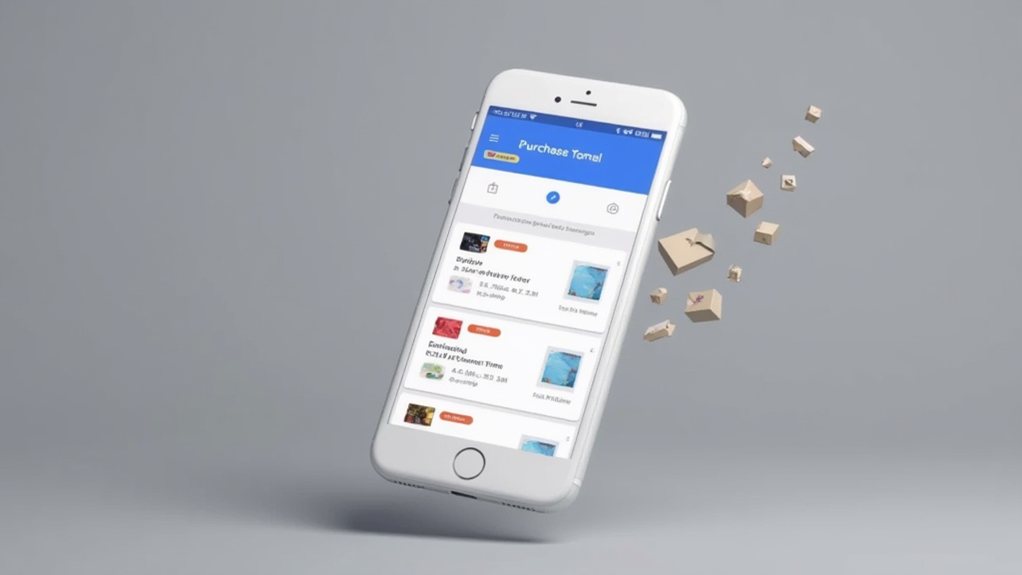Gmail’s new Purchases Tab, launching September 2025, transforms online shopping management by consolidating order tracking, deals, and delivery updates in one streamlined dashboard. The feature automatically surfaces packages arriving within 24 hours, provides direct carrier tracking links, and offers quick-access buttons to shopping sites. As privacy controls remain customizable, this bold move positions Gmail as the ultimate command center for digital shoppers. This game-changing upgrade promises to change how millions track their retail journey.

Gmail is rolling out its most ambitious package tracking overhaul yet, introducing a dedicated Purchases tab that promises to transform how users manage their growing mountain of online shopping receipts and delivery updates. The feature, set to launch globally for personal accounts in September 2025, consolidates order confirmations, shipping notifications, and delivery updates into a streamlined dashboard that’s more organised than your seasonal closet cleanout.
Gone are the days of frantically searching through endless email threads to track down that missing package. The new Purchases tab smartly surfaces packages arriving within 24 hours at the top of the inbox, complete with clickable tracking buttons that whisk users directly to carrier tracking pages. It’s like having a personal shopping assistant who actually remembers where all your receipts are. Users can easily manage their online orders with quick access buttons that open shopping websites directly without needing to search through emails. The new subscription management tools help users declutter their inboxes by unsubscribing from unwanted emails in one place.
Although Gmail‘s 2022 package tracking cards laid the groundwork, this latest evolution takes order management to new heights. The system automatically identifies purchase-related emails and presents them with thumbnail previews and summary cards, making it easier to spot that impulse buy you forgot about last week.
And with PwC reporting that 39% of holiday gift spending happens between Thanksgiving and Cyber Monday, this feature couldn’t arrive at a better time.
Privacy-conscious users might raise an eyebrow at Google’s automated tracking capabilities, but the company emphasises that this feature simply repurposes data already being extracted for package tracking. Those preferring a more traditional inbox experience can disable the feature through Gmail Settings, proving that sometimes less really is more.
The new tab positions Gmail ahead of competitors like Outlook and Yahoo Mail, which offer basic shopping filters but lack the sophisticated live tracking functionality that makes Gmail’s solution distinctly powerful. It’s not just about organising emails anymore – it’s about creating a unified command centre for the modern online shopper.
For frequent shoppers juggling multiple orders, the feature acts as a much-needed lifeline during peak shopping seasons. The integration with Gmail’s promotions sorting adds another layer of convenience, helping users spot relevant deals while keeping tabs on their incoming packages. It’s like having a radar system for both your shopping habits and your wallet.
The move represents a significant shift from background tracking to a visible, user-facing feature that acknowledges our increasingly digital shopping habits. As online retail continues to grow, Gmail’s purchase tracking overhaul isn’t just a fancy new feature – it’s a glimpse into the future of email organisation where artificial intelligence and user convenience intersect in surprisingly useful ways.
Final Thoughts
Gmail’s new purchase tracking feature represents a notable evolution in how our inboxes operate, merging convenience with potential privacy issues. While personalized deals may enhance the shopping experience, users must consider the implications of sharing more data with Google. As email transitions from a basic communication tool to an AI-driven shopping assistant, the distinction between beneficial innovation and digital surveillance becomes increasingly unclear.
The Emotional Computer team can help companies navigate this shift effectively, ensuring they harness the power of personalized marketing while addressing privacy concerns. If you’re interested in learning more about how we can assist you in implementing these services, please visit our contact us page to get in touch!

